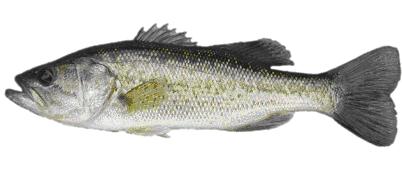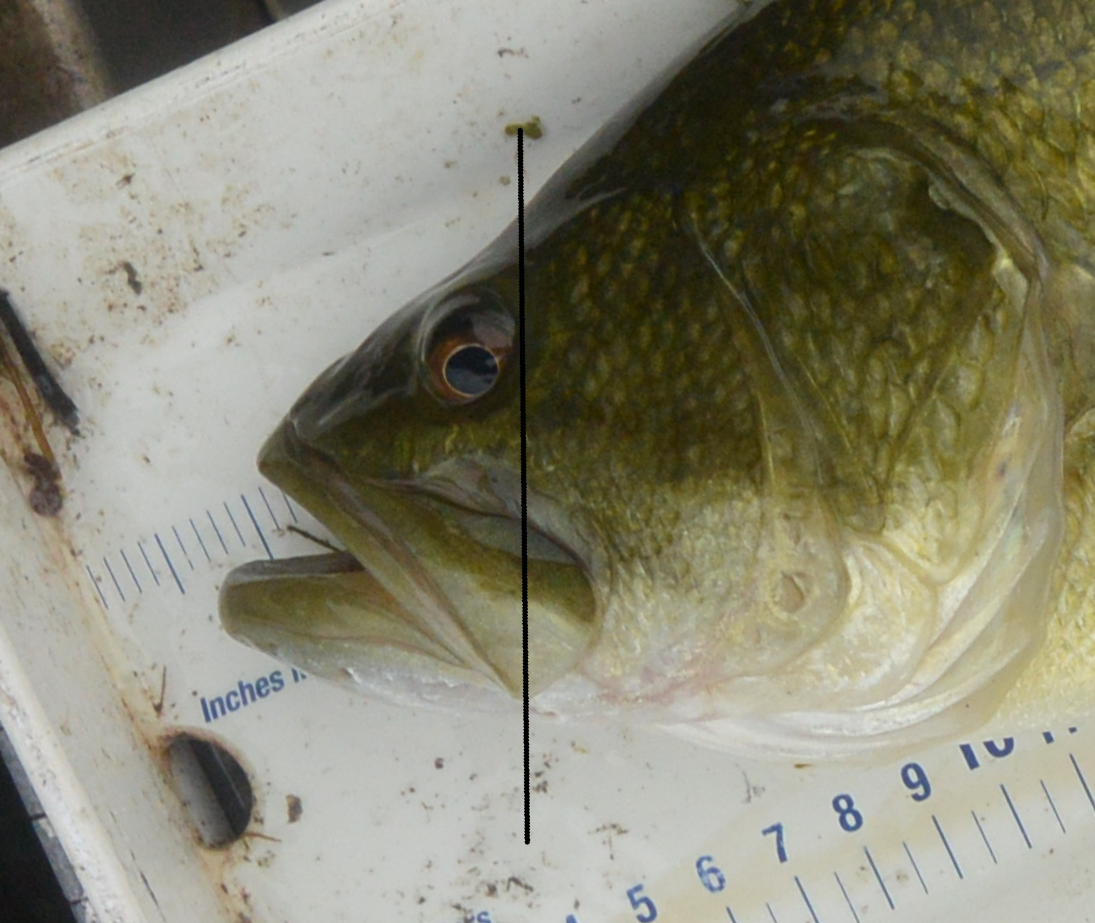Largemouth Bass
Micropterus salmoides
Report it
If you think you have found an aquatic invasive species:
- take photos
- note:
- the exact location (GPS coordinates)
- the observation date
- identifying features
- contact us to report it
Learn about Largemouth Bass, including their identifying features, location, habitat and impacts.
Largemouth Bass (Micropterus salmoides) are freshwater fish and members of the sunfish family. They are a popular sport fish but can be invasive when introduced to new lakes and rivers. They are a top predators that primarily eat fish, but also feeds on insects, crustaceans and frogs.
On this page
- Identifying features
- Where is the species invasive?
- Distribution
- Habitat
- Impacts
- Photo gallery
- Related links
Identifying features
You can identify Largemouth Bass by their:
- large, sloping mouth that extends past the eye
- large, wide lower jaw slightly longer than the upper jaw
- eye, which is often gold in colour
- laterally compressed body (less than the Smallmouth Bass)
- sides with irregular bars that form a stripe (very apparent in juveniles)
- amber and clear pectoral fins
- joined dorsal fins, that appear as 2 (with the separation between the 2 more obvious than in Smallmouth Bass)
The body colour of Largemouth Bass changes with size, condition and habitat. They will be darker with more contrasting markings in clear, weedy water. In cloudy water, they are a paler green colour overall.
Where is the species invasive?
Their recent spread is a result of accidental introductions from live bait and unauthorized transfers between waterbodies for recreational fishing.
In Canada, Largemouth Bass have been found invasive in:
- southern British Columbia, including:
- Columbia River system, including Vaseaux, Osoyoos, Kootenay and Christina lakes
- Lower Fraser River Watershed
- South Thompson River Watershed
- Ontario
- some populations in western Ontario on the borders to the States and Manitoba
- Quebec
- Saint Lawrence River
- Richelieu-Lake Champlain system
- Saskatchewan
- Boundary Reservoir on the Souris River
- New Brunswick
- St. Croix River
- Saint John River (Meduxnekeag and Mactaquac Arm)
The Largemouth Bass is currently not reported in Nova Scotia, Prince Edward Island nor Newfoundland and Labrador.
Distribution
Largemouth Bass are native to the fresh waters of eastern-central North America, including the lower Great Lakes and some inland waters of southern Ontario. However, they have been widely introduced to other regions and are now one of the most widely distributed freshwater fish in the world, mainly because of their popularity as sport fish.
Habitat
Largemouth Bass prefer warm water and are usually found in small, shallow lakes or shallow bays of larger lakes. They are often found close to dense aquatic vegetation (e.g. cattails, waterlilies and submerged aquatic plants, such as pondweed) or other forms of cover, such as sunken logs.
Unlike Smallmouth Bass, Largemouth Bass are rarely found in rocky areas. Therefore, the habitats of Largemouth and Smallmouth Bass often do not overlap, even if both species inhabit the same lake.
Impacts
Largemouth Bass are top predators that can dramatically change native food webs after being introduced to a new waterbody. They are visual feeders and take food from the surface, in the water column and off the bottom of lakes. When established in new areas, Largemouth Bass can:
- change the food web by reducing the amount of prey available to native fish
- reduce or cause the local extinction of native fish populations or cause them to alter their behaviour
There are many factors that make Largemouth Bass a successful invader, including their:
- fast growth rate
- dietary flexibility
- tolerance of high water temperatures and water cloudiness (turbidity)
Photo gallery

Largemouth Bass.

The jaw of the Largemouth Bass extends well behind the back margin of the eye when mouth is closed.
Related links
- Report an aquatic invasive species
- Reduce the risk of aquatic invasive species
- Biological Synopsis of Largemouth Bass (Micropterus salmoides)
- Science Advice from a Risk Assessment of Largemouth Bass (Micropterus salmoides) in British Columbia
- Biological Risk Assessment for Smallmouth Bass (Micropterus dolomieu) and Largemouth Bass (Micropterus salmoides) in British Columbia
- Proceedings of the National Workshop on Six Invasive Fishes Risk Assessment in British Columbia
- A Review of Yellow Perch (Perca flavascens), Smallmouth Bass (Micropterus dolomieu), Largemouth Bass (Micropterus salmoides), Pumpkinseed (Lepomis gibbosus), Walleye (Sander vitreus) and Northern Pike (Esox lucius) Distributions in British Columbia
- Date modified:


